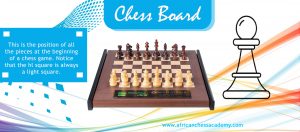The Pieces
Different pieces have different powers. Learning how to coordinate their
movements effectively is one of the game’s primary challenges.
King
The King The king is a slow-moving piece, but it is the most valuable one. If your king is lost, so is the game. The king may move one square in any direction.
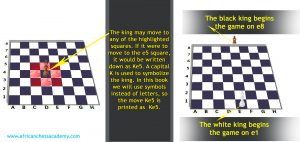
Rook
The Rook The rook is a powerful piece, which is outranked only by the queen. It may move any number of unoccupied squares both horizontally and vertically.
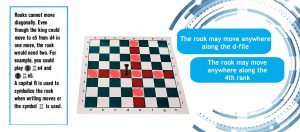
The rooks begin the game in the board’s corners.
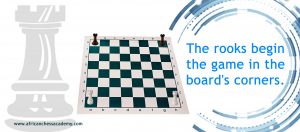
The Bishop
The bishop is not as strong a piece as the rook. It covers almost as much ground as the rook if it is in the middle of the board, but loses strength as it moves away
from the center. The bishop is confined to the diagonals and cannot move horizontally or vertically. Also, it must always remain on the same color square as the one it starts from.
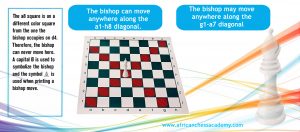
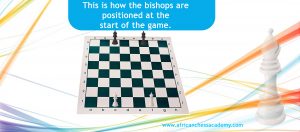
Queen
The Queen The queen is the most powerful piece in chess and combines the movements of the rook and bishop. She can move any number of unoccupied squares vertically, horizontally, or diagonally. The queen is too valuable to be given up lightly. She needs to be protected from capture. Losing your queen does not lose the game, but it greatly reduces your fighting capacity
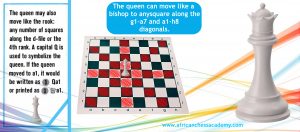
The Knight
The knight’s move is the most difficult one to explain. A one-two approach is usually used, which means that if the knight moves one square horizontally, it must move two squares vertically. Alternatively, if the knight moves one square vertically, it must then move two squares horizontally. As long as the destination square is
unoccupied, the knight can move to it. The knight is the only piece capable of jumping over others. Color also matters to the knight. It oscillates or alternates between colors. If it is on a light square it may only move to a dark square, and vice versa.
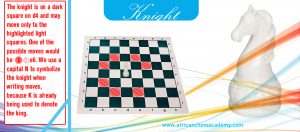

The Pawn
The pawn is the basic unit of force in chess. It is the least powerful piece, but it is unique in several ways. It is the only piece that cannot move backward. It may move either one or two squares forward on its first turn, but afterward it can move only one square at a time. It also captures in a different way than it normally moves. No other piece can make that claim. A pawn can move forward if there is no piece on the square immediately in front of it, but it captures enemy pieces.

